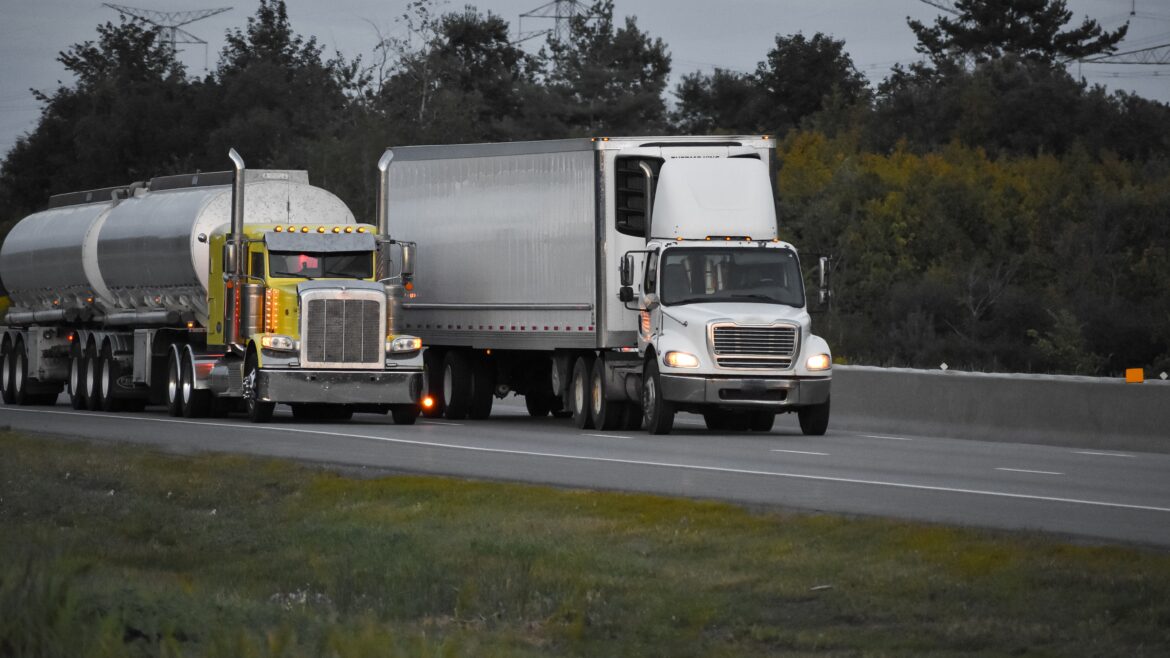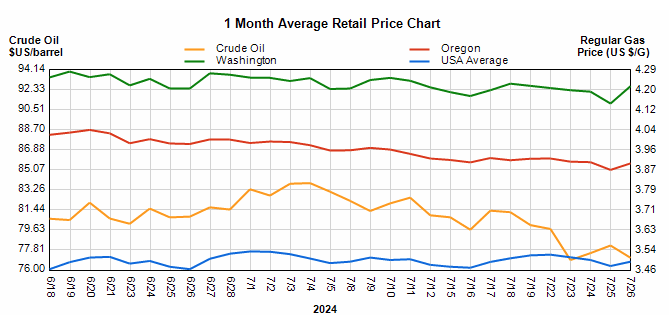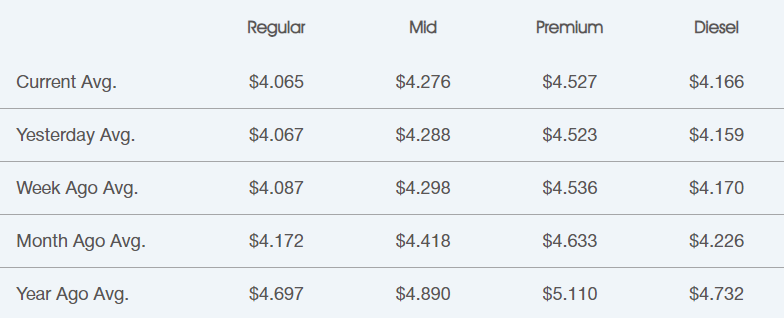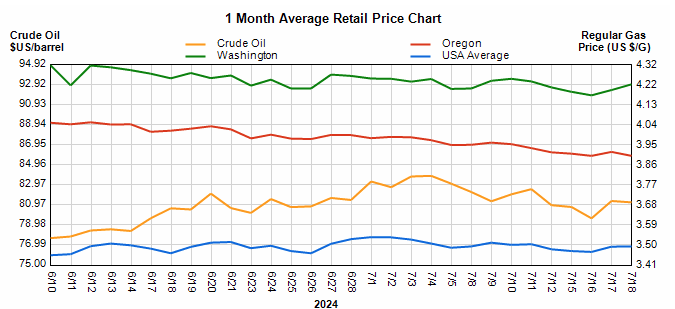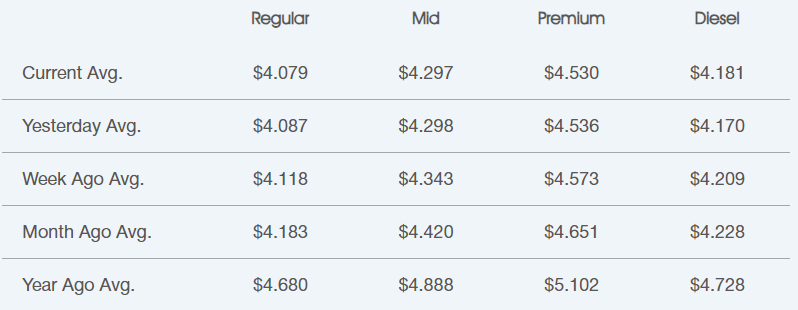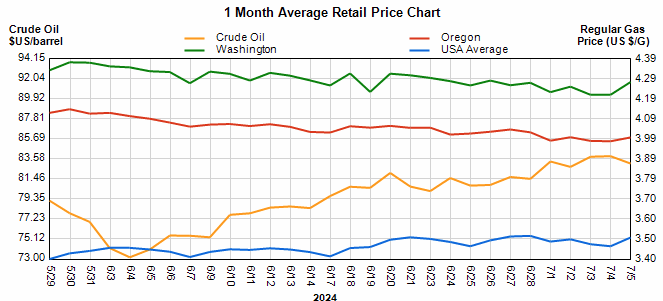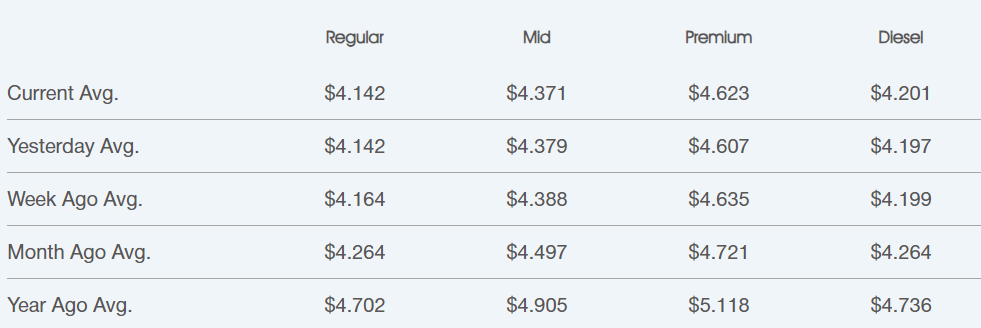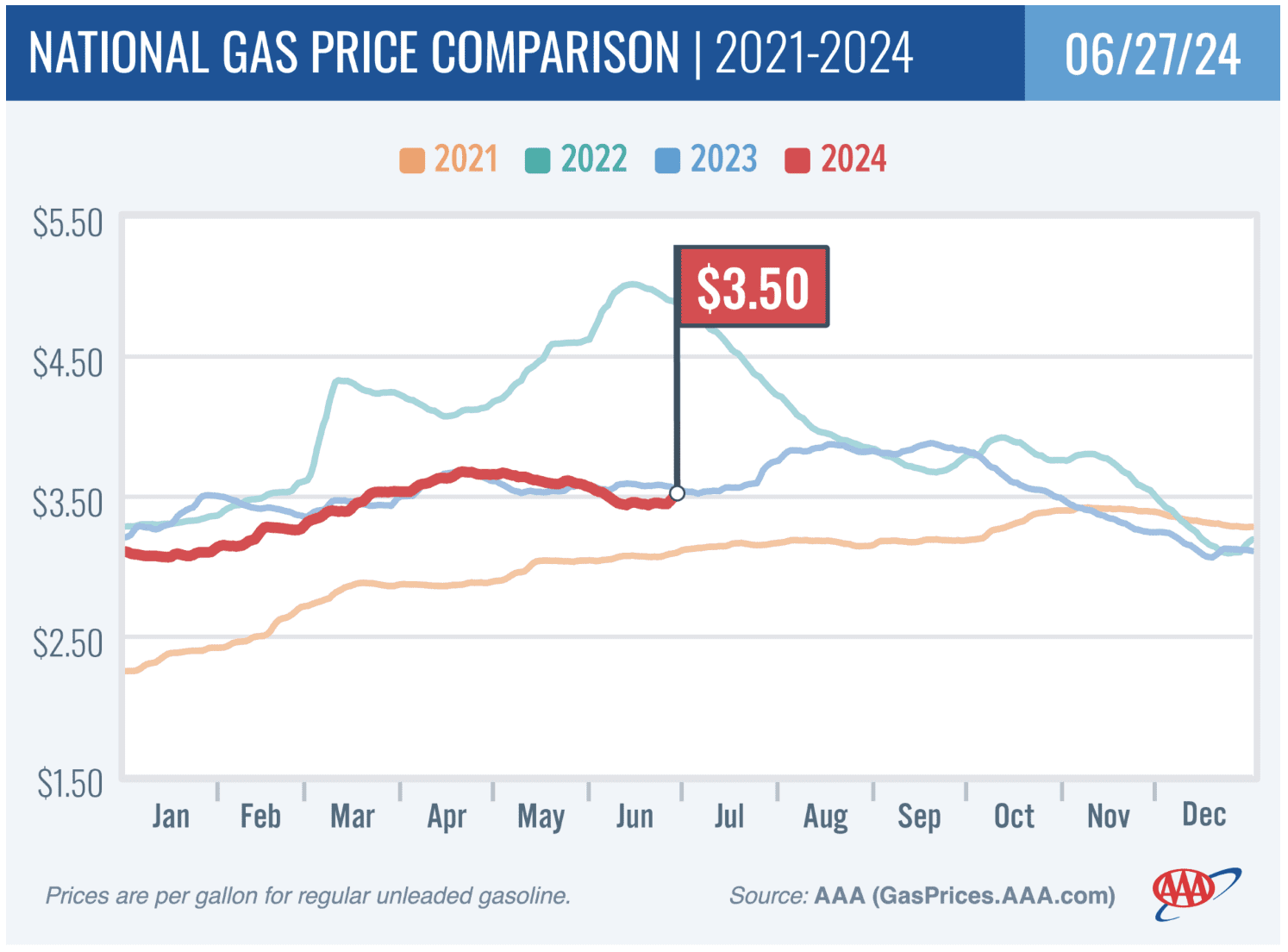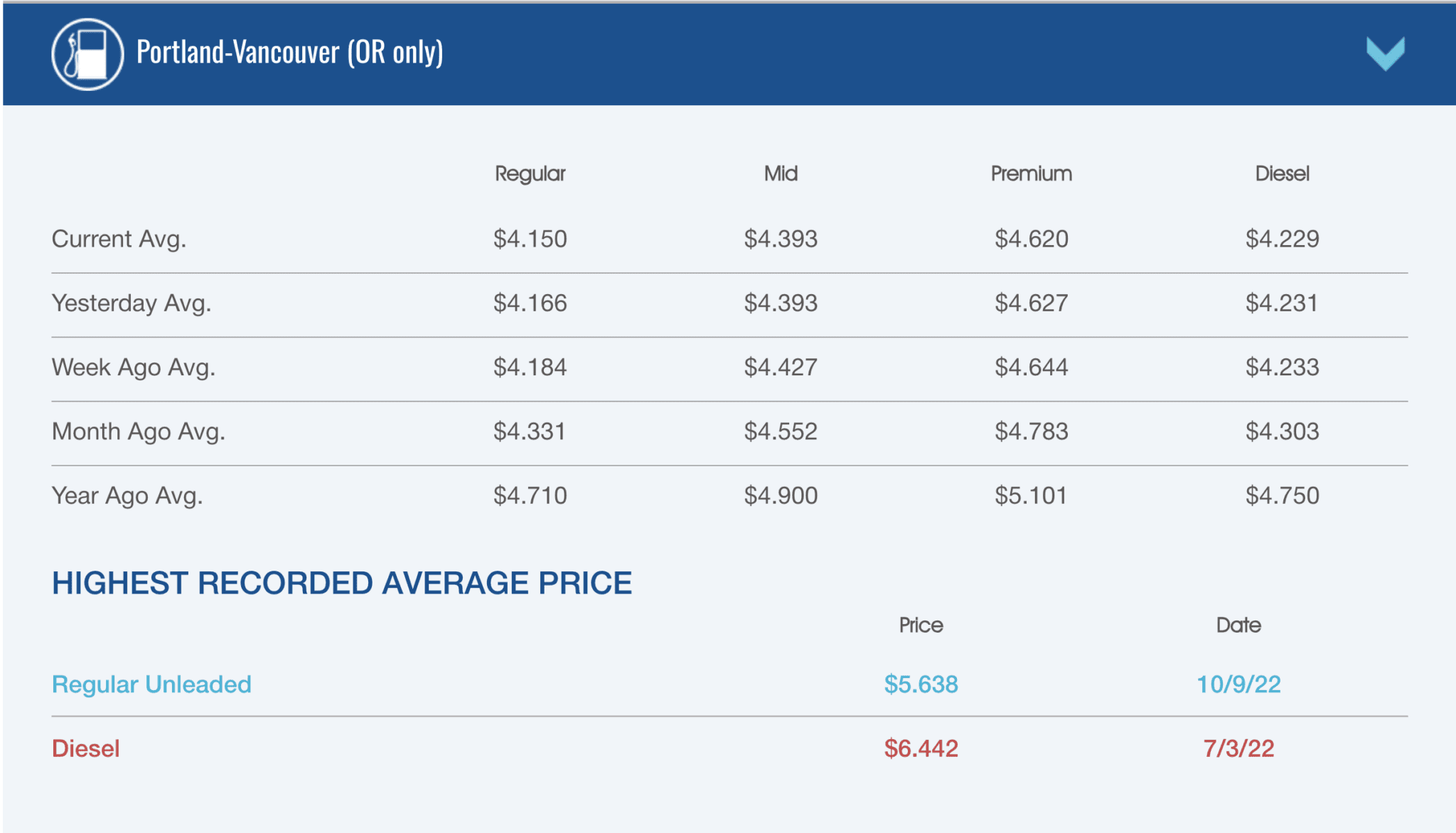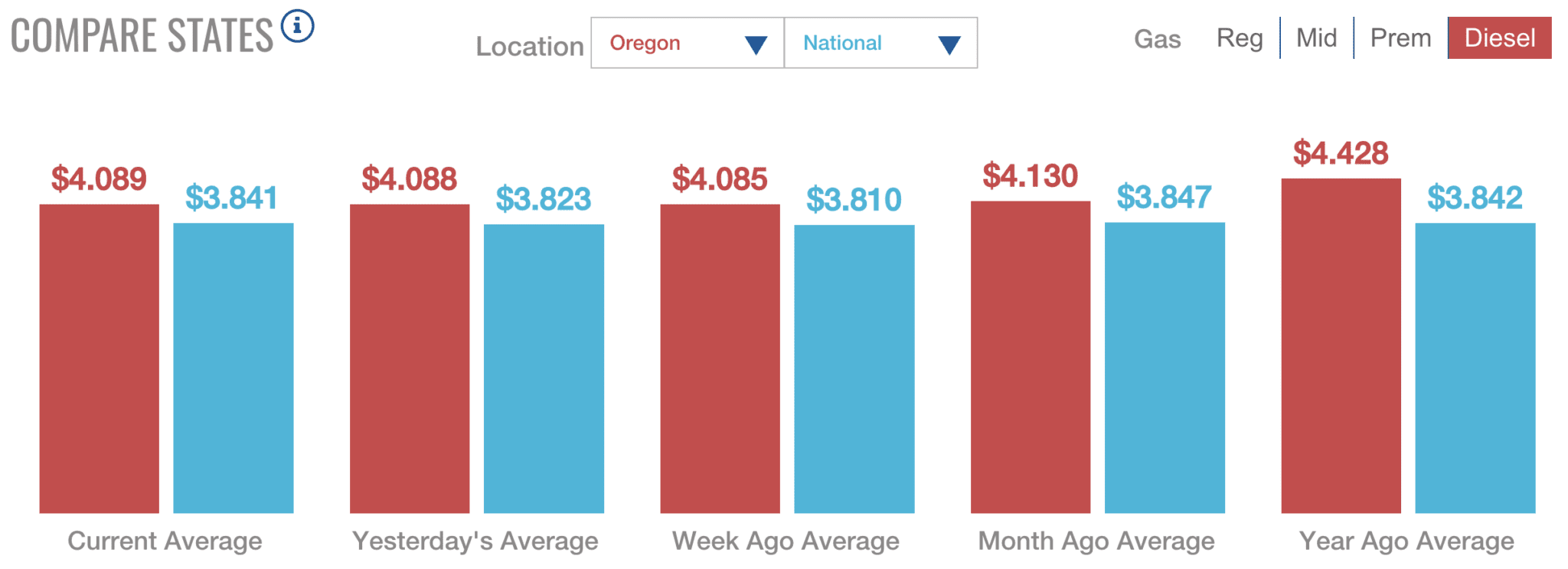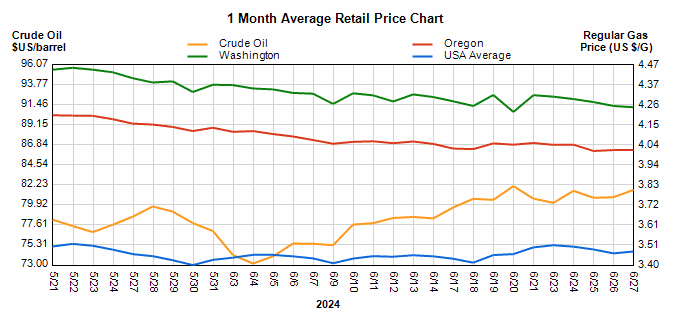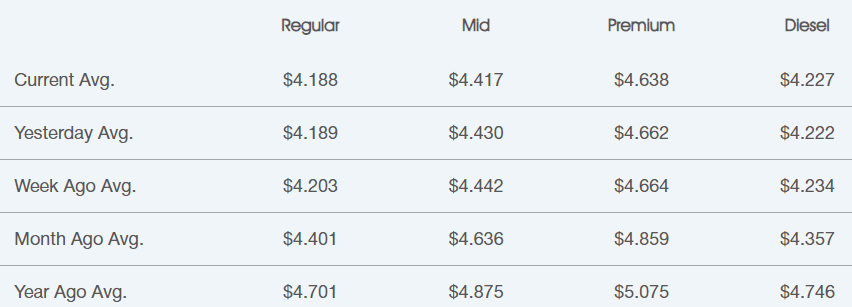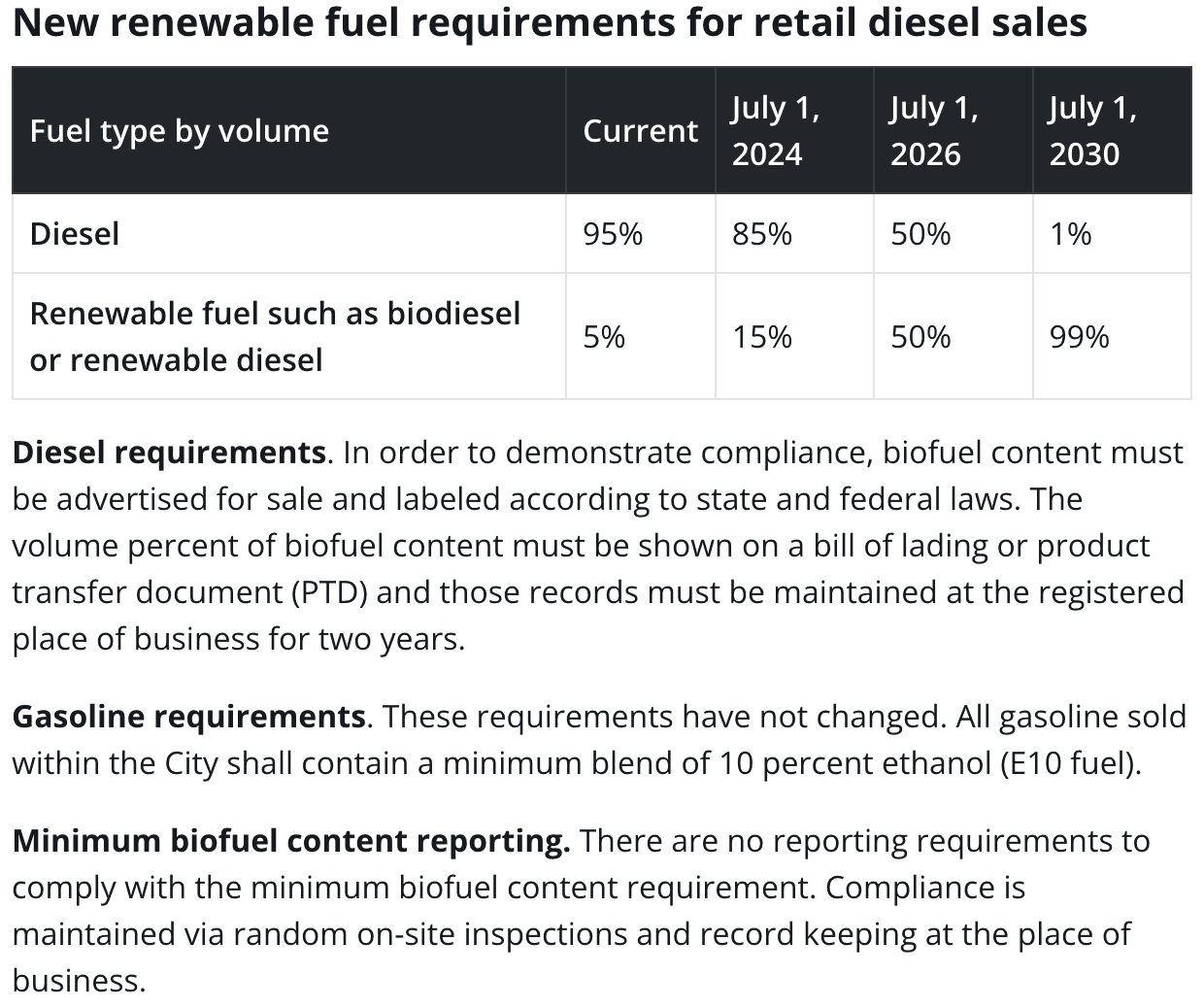Fuel Market Report: July 28th – Aug 3rd, 2024

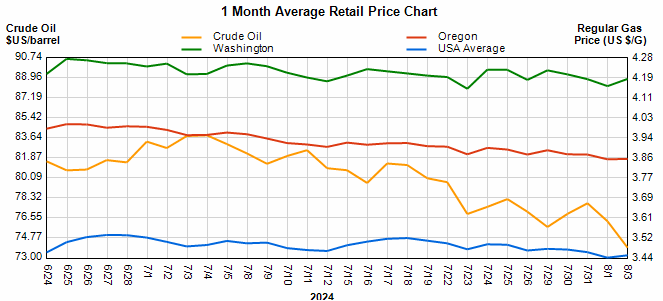



Oregon Fuel Price Variance

Fuel Market News
The market continued to drop this past week as prices are down across the board. Both the wholesale and retail markets saw these pricing shifts. Rack averages for E10 fell $0.07, while B5 and B20 both fell $0.08. The retail market saw this trickle down as the average price of gas in Oregon fell $0.04, while Washington fell $0.02. Oil prices dropped significantly as well as the stock market has trended downward for the past 4 days. Oil prices dropped $2.48 from last week’s price to a current price of $72.94. The weeks proceeding may bring more shifts in pricing as analysts respond to the current market conditions.
Curious to learn more about R80/B20 blends?
Book an appointment with one of our low-carbon fuel analysts.
City of Portland began their fuel blending requirements for all diesel blends to increase to the minimum of a B15 blend. This will lead to most stations using B20 biodiesel or R99 Renewable diesel if allocations allow for it.
To learn more about these changes that will affect your company’s vehicles, equipment, and annual fuel purchasing schedule an appointment with one of our fuel market analysts.
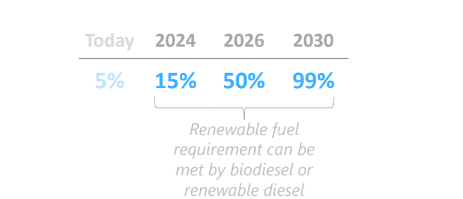
Important Note: Per the City Of Portland, “Distributors in the City of Portland are required to meet the minimum biofuel content requirements for all fuel they distribute beginning on May 15, 2024. All diesel fuel distributed to retail stations, non-retail dealers, or wholesale purchaser-consumers must include a minimum of 15% biofuel content, from either renewable diesel or biodiesel. This requirement increases to 50% on May 15, 2026, and 99% on May 15, 2030”.
Reasons For Price Variance:
Crude oil is trading below $80 for the third time in ten weeks, at a current price of $72.94/barrel, $2.48lower than last week, as oil prices continue to trend downward, for the fifth week in a row.
Crude oil is the main ingredient for gasoline and diesel. Per AAA, on average about 50% of what you pay at the pump is the price of crude oil, breaking down as 25% refining, 11% distribution & marketing, and 14% taxes—a helpful breakdown for consumers wondering why they are paying the prices that they pay. Crude Oil is trading at $72.94/barrel compared to $75.42/barrel, last week and $82 a year ago.
It’s essential to recognize that fuel prices result from a complex interplay of the factors mentioned above and other factors regionally. Additionally, prices may vary by specific regions within Oregon and Washington. For the most precise and up-to-date information on fuel prices and the causes for these price changes within your area, use the links below for AAA & GasBuddy.
If you have any questions, feel free to contact Star Oilco and speak to one of our fuel market advisors to discuss how the market can impact your business.


